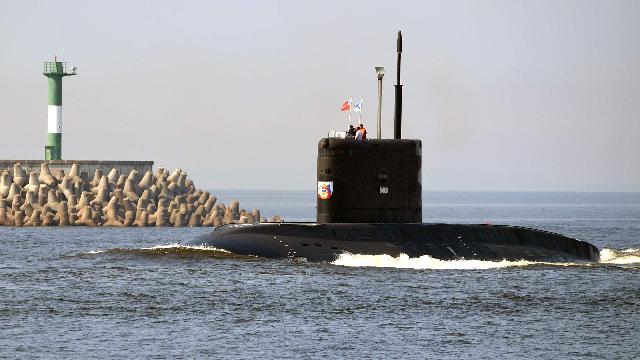Sailors of the Russian Federation and China have worked out joint control of different areas of the World Ocean
For the first time, Russian and Chinese submarines conducted joint patrols. The purpose of these complex exercises is to practice control of different areas of the world's oceans and search for surface targets, experts interviewed by Izvestia said. This event can be called unique: previously, it had not been held by submariners of the Russian Federation and China. Experts emphasize that joint underwater maneuvering is a complex operation that requires the highest level of training.
How was the joint underwater patrol
The diesel-electric submarine Volkhov of the Pacific Fleet and a submarine of the PLA Navy entered an agreed patrol route in the Seas of Japan and the East China Sea. During the cruise, the crew of the Volkhov overcame more than 2 thousand nautical miles, the press service of the Pacific Fleet reported. The other day, the submarine returned to its base in Vladivostok.
The joint underwater patrol, which involved Russian and Chinese submarines, is a unique operation, Rear Admiral Mikhail Chekmasov, Candidate of Military Sciences, told Izvestia.
"The Russian and Chinese sides have not held such events before, and I don't recall working out such things with foreign boats at all," he said. — This is a very complicated process. The ships are submerged, and they can navigate relative to each other only with the help of sonar equipment that they have on board. And this is quite difficult to do, because the submarines themselves are very low-noise.
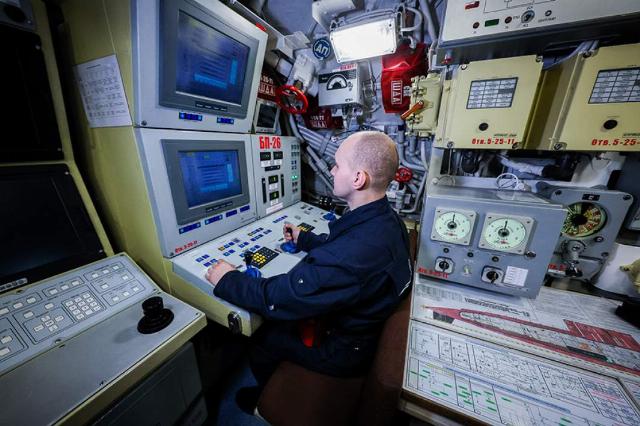
Photo: TASS/Yuri Smithyuk
Image source: iz.ru
During the joint maneuvering, the crews practice searching for enemy surface and submarine ships, the rear admiral added.
Russian and Chinese crews learn to control areas of the world's oceans during such events, military expert Dmitry Boltenkov told Izvestia.
"First of all, it was the elements of joint sea diving that were worked out, since they are the most complex in the field of communication and navigation," he explained. — Management issues were also worked out. Given the actions in the waters of the Japan and East China Seas, where the dynamically developing submarine forces of Japan, South Korea, the United States and Taiwan are widely represented, which has begun to actively update its submarine fleet, it can be assumed that there were attempts to conduct joint anti-submarine operations against the fleets of these countries. Actions with torpedo weapons against surface forces of potential opponents of our countries could also be practiced. In general, we can assume that the first joint cruise of the submarines of our two countries gave a lot of experience to our submariners, and it will not be the last.
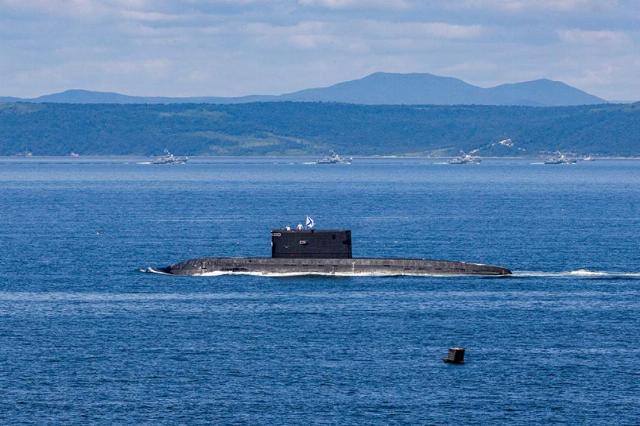
Diesel-electric submarine Volkhov
Image source: Photo: TASS/Maria Smityuk
Earlier in August, a Russian-Chinese detachment of surface ships conducted joint patrols in the Asia-Pacific region. This operation, which became a logical continuation of the "Maritime Interaction – 2025" exercises, was aimed at working out complex joint tasks: from air defense and anti-submarine defense to mutual assistance.
What is the difficulty of joint underwater patrols?
Sailing together by two or more submarines is fundamentally different from sailing by a group of surface ships. Ships operate in a two-dimensional environment, they have the opportunity to observe each other visually or through the use of technical means, such as radars. They can exchange information with each other both by radio, and visually by signal flags or by means of searchlights. At the same time, they can move stealthily on the ocean surface, in particular in radio silence mode. Submarines operate in three-dimensional space, in conditions of complex marine hydrology and without the possibility of maintaining clear contact between submarines. Communication is possible only through underwater sonar communication, which has limitations on the range and speed of information exchange. At the same time, the active use of sonar leads to a loss of submarine stealth. Under such conditions, a successful joint cruise of submarines with crews from completely different linguistic cultures is an extremely difficult task.
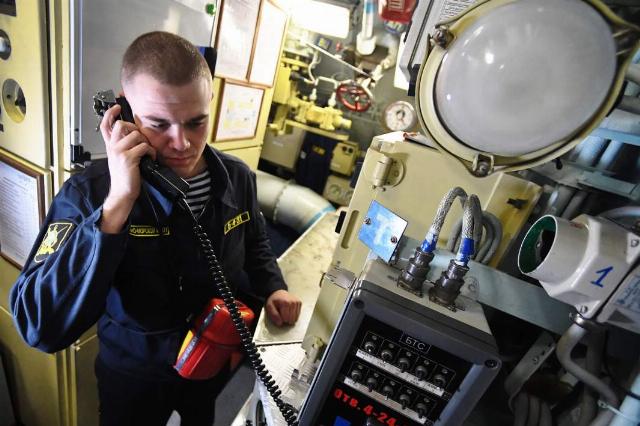
Photo: RIA Novosti/Vitaly Ankov
Image source: iz.ru
— Most likely, there were liaison officers and translators on board each of the boats, — Dmitry Boltenkov noted. — Crews also need to know the characteristics of the partner boat well in order to understand exactly what maneuvers they can perform. Therefore, the Chinese side chose the Project 636 boat, which Russia built for China in the amount of 10 pieces at the beginning of the 21st century. Boats of this type are well mastered by the personnel. At the same time, with such joint scuba diving, it is worth being especially careful when navigating, mistakes in maneuvering give the possibility of an underwater collision, especially when the partner's boat gets into the area of the sonar shadow. Such cases have repeatedly occurred in the history of the Navy of the USSR and the USA. The last such incident occurred on February 11, 1992, when the B-276 Kostroma submarine rammed the Baton Rouge US Navy submarine during its ascent, which was decommissioned after this collision.
The cruise of the boats from the Russian side was provided by the corvette "Loud" and the ocean tugboat "Photius Krylov". The waters of the Japan and East China Seas are saturated with the movement of various vessels, as well as warships from a number of countries. In case of an emergency, it is necessary to quickly provide assistance to a submarine in distress. Therefore, the participation of surface ships in the joint cruise of submarines is a normal practice, the expert noted.
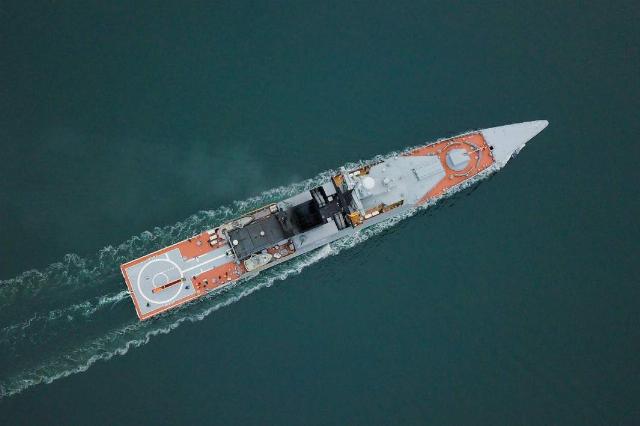
The Loud Corvette
Image source: Photo: TASS/Yuri Smityuk
Izvestia reference
The submarine forces of the PLA Navy were created with Soviet help, and their history began with the transfer of the S-52 and S-53 submarines on June 24, 1954. Subsequently, China received a number of more Soviet submarines, as well as documentation and assistance in the construction of submarines of projects 613, 633 and 629. Moreover, ready—made ships were also transferred in the form of kits - in particular, the Project 629 submarine became one of the first built in China. At one time, the possibility of creating a common nuclear submarine fleet was even discussed.
Later, after the breakdown of military-technical relations, China developed its underwater technologies independently.
The 1990s gave a new impetus to their development. The end of the Cold War and the change in Chinese policy allowed the country's authorities to gain access to advanced military and dual-use technologies, primarily in Western European countries. Ukraine, on the other hand, sold everything it could to China for a song in a momentary attempt to make money. Russia, on the other hand, sought to sell large quantities of weapons, realizing that the Chinese, who had gained extensive experience in reverse engineering, were able to copy and reproduce almost anything. As a result, China bought large batches of submarines of projects 877 and 636 in the 1990s and 2000s. The technologies obtained, as well as the experience gained, allowed the Chinese Navy to build its latest non-nuclear submarines, for example, 041 Yuan. Chinese scientists and engineers have managed to create their own air-independent propulsion systems and start exporting their submarines, in particular, to Pakistan.
Roman Kretsul
Dmitry Boltenkov
